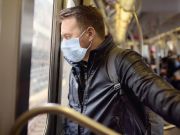Decreased mobility correlated strongly with reduced COVID-19 case growth rates across U.S. counties
TUESDAY, July 7, 2020 (HealthDay News) — Social distancing is one of the main measures to combat COVID-19 spread, according to a study published online July 1 in The Lancet Infectious Diseases.
Hamada S. Badr, Ph.D., from Johns Hopkins University in Baltimore, and colleagues used daily mobility data derived from aggregated and anonymized cell phone data to capture real-time trends in movement patterns for each U.S. county and generated a social distancing metric using these data. Together with epidemiological data, these data were used to assess how social distancing affected the rate of new COVID-19 infections in 25 counties.
The researchers observed a strong correlation for mobility patterns with decreased COVID-19 case growth rates for the most affected U.S. counties, with Pearson correlation coefficients greater than 0.7 for 20 of the 25 counties. The effect of changes in mobility patterns, which decreased by 35 to 63 percent, on COVID-19 transmission is not likely to be detected for nine to 12 days or potentially for up to three weeks, consistent with the incubation time of severe acute respiratory syndrome coronavirus 2. There was evidence that behavioral changes were underway in U.S. counties days to weeks before state- or local-level stay-at-home policies were implemented.
“It might be difficult to recognize the value in safe behavior when the reward is not obvious, and the danger is not immediate,” the authors write. “Nevertheless, given the absence of proven antiviral drugs or a vaccine, social distancing is one of the most important and timely ways to combat the spread of COVID-19.”
Copyright © 2020 HealthDay. All rights reserved.








